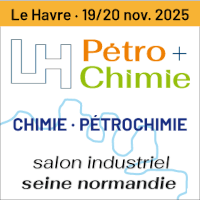sept.
08
2009 | The world’s first full-scale floating wind turbine – StatoilHydro’s Hywind pilot – is being officially inaugurated in the North Sea today, 8 September.
“Today, we’re inaugurating the pilot facility which could help floating wind turbines to make an important contribution in the longer term to meeting the world’s big demand for energy,” says Margareth Øvrum, executive vice president for Technology & New Energy (TNE) in StatoilHydro.
Hywind is a good example of the way StatoilHydro’s long experience from the offshore oil and gas business can be applied to tomorrow’s market for renewable energy. The floating wind turbine has been delivered within budget and on schedule.
“We’ve drawn on experience acquired during 30 years on the Norwegian continental shelf to realise this groundbreaking project,” says Gunnar Myrebøe, executive vice president for Projects & Procurement in StatoilHydro.
“In that respect, our close collaboration with the supplies industry has played a key role in the success of the Hywind development.”
StatoilHydro is investing about NOK 340 million in the project, with Enova providing NOK 59 million. The latter is a state-owned company which promotes environment-friendly changes to energy production and use in Norway.
Hywind comprises a 2.3-megawatt wind turbine installed on a traditional floater of the kind previously used for such applications as production platforms and offshore loading.
The turbine has been manufactured by the Siemens Wind Power company in Denmark, while France’s Technip built the floater and Nexans produced and laid the power cable to land.
Following assembly in the Åmøy Fjord near Stavanger, the Hywind pilot was towed in June to a location 10 kilometres south-west of Karmøy island for a two-year test period.
“Floating wind power remains an immature technology, and the road to commercialisation and full-scale construction of wind farms will be long,” says Øvrum.
“Our goal with the Hywind pilot to test how wind and waves affect the structure, learn how the operating concept can be optimised and identify technology gaps.”
Source : Communiqué STATOILHYDRO
| |
|
|






  
|